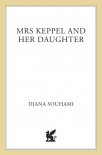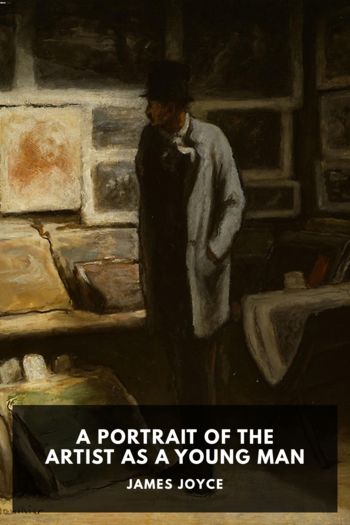Mrs. Keppel and Her Daughter, Diana Souhami [the ebook reader TXT] 📗

- Author: Diana Souhami
Book online «Mrs. Keppel and Her Daughter, Diana Souhami [the ebook reader TXT] 📗». Author Diana Souhami
Love, Violet suggested, is a merry-go-round of betrayal. There is no freedom in it. Its manipulations, declarations and reversals form repetitive patterns.
* * *
Mrs Keppel moved from 16 Grosvenor Street in 1924. She bought the Ombrellino, a huge villa overlooking Florence at the top of a hill called Bellosguardo (beautiful view). She had tired of London, her social dazzle tarnished by the war, the first Labour administration, Violet’s scandal, middle age, the English climate which she loathed. Sonia was ensconced in Hampshire. Henry, a brother for Rosalind, was born in March 1924. George had no occupation to keep him in England.
She kept a furnished suite at the Ritz for when she was in town. The Ritz, created at the turn of the century with Bertie’s tastes in mind, was her spiritual home. The Palm Court with its panelled mirrors, gold trellises, glass roof, little gilded replica Louis XVI armchairs made by Waring and Gillow, was an Edwardian haven in a changing world. Its marble fountain was known as ‘La Source’. Her suite with marble basins and gold candelabra looked out over Green Park and had servants’ rooms attached.
The Ombrellino was her palace in the sun, financed by the King’s bequest. Here she could spend, indulge and enjoy her wealth. Every room and terrace gave a stunning view – over the Duomo, Baptistery, Palazzo Pitti, Ponte Vecchio, over olive groves, the river Arno and ‘the greenest of pastoral landscapes’. Harold Acton wrote of it and her:
In London she had been on parade, as it were, but in Florence she could lead, comparatively, the simple life. The food at L’Ombrellino was conspicuously more lavish when a Rothschild was being entertained on the principle of ‘unto everyone that hath shall be given, and he shall have abundance’.
She never learned the language but this proved no impediment to her Italianate life. Bellosguardo, studded with monolithic villas behind stone walls and surrounded by olive groves, was an ex-patriate colony. English was spoken. Mrs Keppel’s neighbours composed, painted, collected works of art, travelled and entertained. There was the art historian Bernard Berenson in the Villa I Tatti (for many years he worked for Joseph Duveen), Mabel Dodge ‘presiding over Bohemia’ at the Villa Curonia, Sir George Sitwell at the Villa Montegufoni, Harold Acton at La Pietra.
Rich English and Americans bought these huge Tuscan villas at low prices from the late nineteenth century on. The Villa Ombrellino was on a heroic scale. It served Mrs Keppel’s status fantasies. From the terraces Violet said, it was like being on the deck of ‘some great ship about to sail’. The villa, she said, had
quality, beauty, spaciousness, but not intimacy … large, handsome rooms leading out of each other … a mere cupboard assumed the proportions of a cathedral organ, an armchair cannot forget that it is distantly related to a throne.
Galileo had lived there and his bust was on the loggia. Monumental rooms and a great staircase led to the piano nobile. There were three drawing rooms to every bedroom. The servants’ rooms filled the third floor. There were walled gardens with purple bougainvillea, an iris garden, baroque statues, cypress trees.
Into the Ombrellino Mrs Keppel imported all the Grosvenor Street furniture and more. The Chinese pagodas given her by Bertie, Chinese porcelain, eighteenth-century portraits, tapestries, Chippendale chairs and Regency settees. No one, Harold Acton, said, could compete with her glamour as a hostess:
A fine figure of a woman as they used to say, more handsome than beautiful, she possessed enormous charm, which was not only due to her cleverness and vivacity but to her generous heart … Altogether she was on a bigger scale than most of her sex.
She presided aware of past times. Queen Alexandra’s signed photograph was displayed, feathers stuck to a card were captioned in Bertie’s writing ‘shot by me’, a sapphire the size of a duck’s egg was a gift from the King of Persia. Presents she gave had a history. A diamond owl hatpin for the Countess of Listowel was once a trinket for Little Mrs George from Bertie.
Expatriate European princes and queens, Florentine, English and French aristocracy gathered on her terraces. Group photographs taken by George show Princess Irene of Greece, Queen Helen of Romania, Prince Paul of Yugoslavia, Count Raben of Denmark whom Violet resembled. Violet, her social status restored, posed in these photographs with the Princesse de Polignac, with Denys, Sonia, Mrs Keppel, the Princesse Bibesco, the Princesse de Chimay.
The English aristocracy summered at Ombrellino or travelled there from the casinos of the Riviera, the spas of Montecatini and Arles. The talk was of ‘so and so’s liaison with a chauffeur or the rumour of some Casanova’s impotence – variations on the sempiternal themes’. The Earls and Countesses of Rosebery, Abingdon, Kimberley, Ilchester and Listowel, the Viscounts and Viscountesses Knollys, Ellbank and Chaplin, the Dukes and Duchesses of Wellington and Westminster, Lord Stavordale, Mrs Hwfa Williams, the Marchionesses of Curzon and Crewe, Ambassadors from the Netherlands and Chile, French Generals, Admirals of the Fleet and Masters of the Realm, signed the visitors’ book, admired the views, praised the food, played bridge and tipped the butler, who was, said Harold Acton, ‘insatiable of tips especially from the bridge players: he had an intuitive knowledge of their winnings’.
‘Winston was so happy staying with your Mother at l’Ombrellino’, his wife Clementine Churchill wrote to Violet some twenty years later from Montecatini Terme where she was taking a cure:
& I think it was at the beginning of his painting career … I remember he tried to do a Panorama from the Terrace. He





Comments (0)